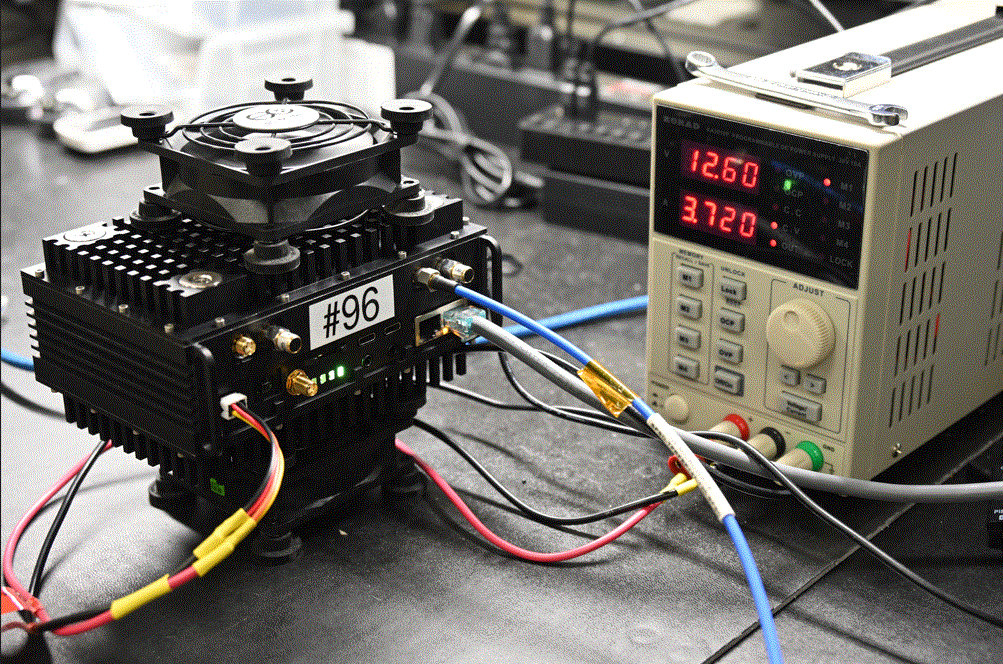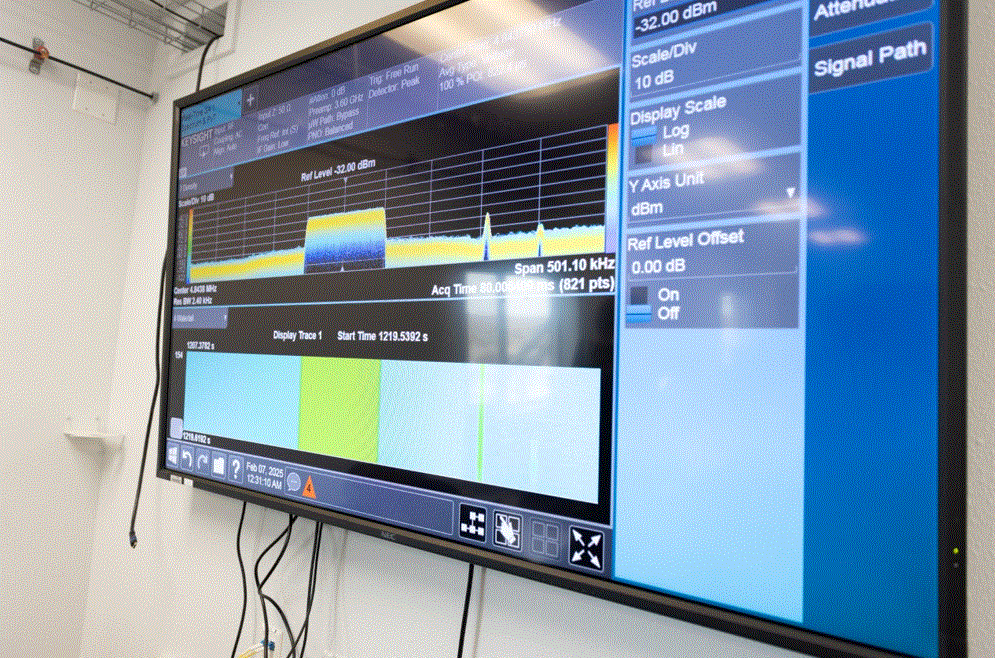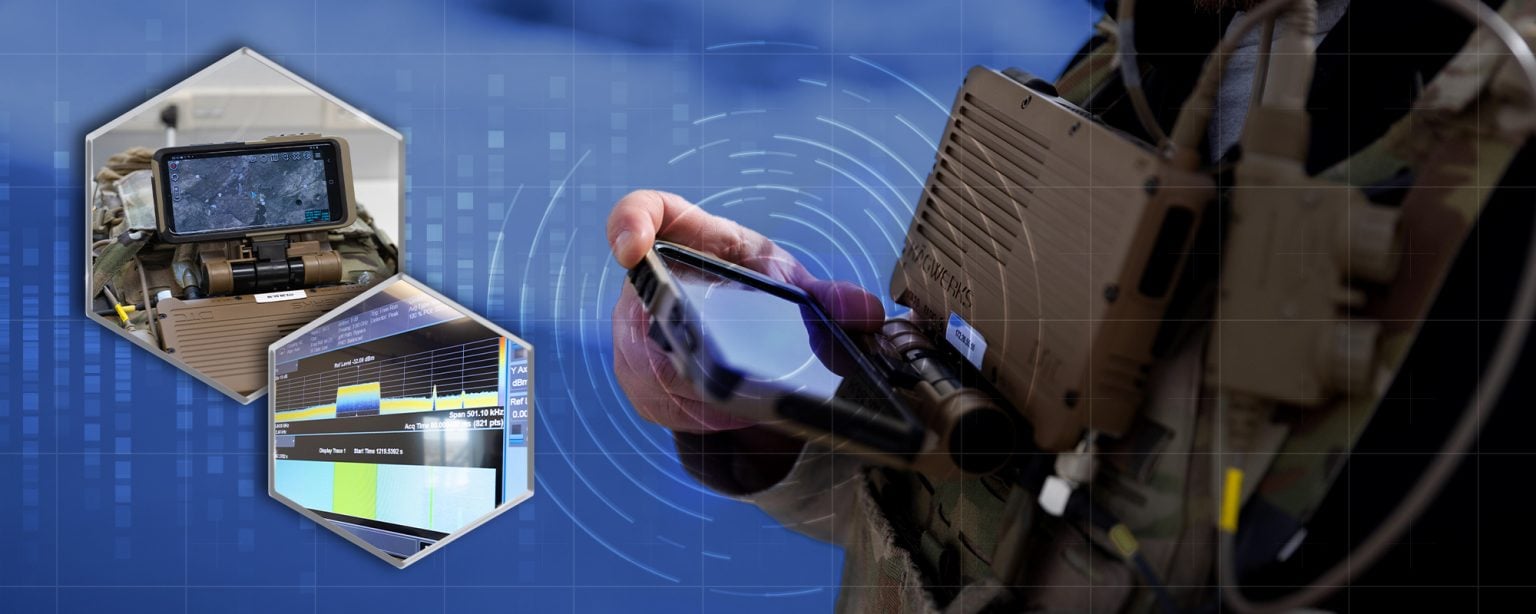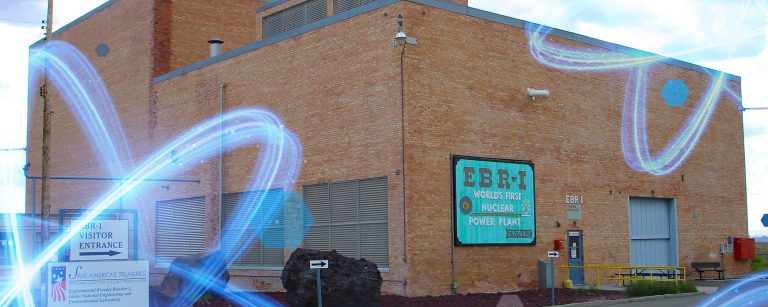In today’s hyperconnected world, wireless communication faces a critical challenge known as the “spectrum crunch.” Spectrum crunch results from more devices vying for limited frequencies, creating an overcrowded radio frequency spectrum — a bottleneck that disrupts communication. Spectrum crunch threatens not only everyday conveniences like cellphone connectivity but also essential services, such as emergency response times, global positioning systems and military operations.
When Hussein Moradi joined the Idaho National Laboratory (INL) in 2009, spectrum crunch was already a significant concern, and the challenge has continued to escalate. With his background in wireless communications from the private sector, Moradi, a wireless communications chief scientist at INL, was tasked with developing a solution to efficiently utilize spectrum frequencies amidst increasing demand. He partnered with University of Utah professor Behrouz Farhang to tackle the complex mathematics behind analyzing and modifying digital communication signals.
This led to the inception of the Wireless Spectrum Communication (WSComm) project, an INL Laboratory Directed Research and Development (LDRD) initiative. LDRD is a program that enables INL to foster creativity and exploration of new scientific and technological frontiers by supporting high-value research and development projects. LDRD projects often result in novel solutions to complex problems.
In the case of WSComm, what started as an LDRD project has evolved into crucial spectrum-sharing technology that has solved communication challenges for federal law enforcement and military users.
The quest for efficient spectrum use
Wireless spectrum is managed by dividing radio frequencies into bands and assigning primary users, like government agencies and major carriers, to specific bands. Secondary users, such as smaller providers and personal devices, can access these bands when they are not in use by primary users. However, this arrangement can lead to congestion and challenges ensuring fair access while protecting primary users from disruptions.
Dynamic spectrum access (DSA) is the proposed solution to this problem. DSA aims to intelligently identify and use underused spectrum frequencies in real time, optimizing the use of limited wireless resources. Despite its potential, implementing DSA in real-world scenarios has been challenging.

At INL, Moradi and the WSComm team tackled the DSA challenge by developing a dual-channel architecture akin to an advanced traffic management system. The first channel, the underlay control channel, operates below the radio frequency noise floor — meaning its signal exists below background levels and is invisible to conventional receivers. Detecting the control channel would be like hearing a whisper in a noisy room. This channel continuously scans for unoccupied or underused frequencies, mapping the spectrum landscape and sharing this information without consuming significant bandwidth.
The second channel, the overlay channel, carries data through software-defined radio that can spread information across up to 128 channels simultaneously. This redundancy ensures that even if some channels face interference, the data can still be transmitted via other channels.
A standout feature of WSComm is its autonomous operation. Devices equipped with WSComm can navigate the spectrum landscape without human intervention, instantly shifting to available frequencies without disrupting connections. This capability ensures uninterrupted communication even in congested environments.
“We’re removing the man in the middle,” said Moradi. “We can sense the incumbent or any kind of other communications going on within that band within 20 milliseconds and move out of the way.”
From concept to field deployment
By 2012, INL’s research on DSA had advanced significantly, leading Moradi and his team to secure $4.7 million in LDRD funding to formalize the WSComm project. The following year, they demonstrated the technology to potential government users, aiming to transition WSComm from the lab to real-world applications.
In 2016, the INL team approached the Drug Enforcement Administration (DEA), which immediately recognized WSComm’s potential to address the agency’s spectrum challenges. DEA had been operating on crowded frequency bands, which was impacting mission-critical and time-sensitive operations.
With Moradi’s approach, the agency realized it found the solution they had been seeking to continue accessing spectrum bands. This support led to $44 million in funding for WSComm, transforming it into a field-ready solution for the DEA and other Department of Justice officials.

After continued research and development, the end product was a compact software-defined radio that uses dynamic spectrum sensing technology to automatically find the best frequencies. This system continuously monitors the electromagnetic environment, shares data with other units to create a connected or mesh network, and automatically switches to the optimal frequency band, ensuring seamless communication.
“There have been over 300 projects from agencies like NASA, the National Science Foundation, and the Department of Defense trying to solve dynamic spectrum access,” said C.J. Bard, a telecommunications specialist working with the DEA. “But as far as we know, WSComm is the only one with a working prototype that’s actually being used in the field.”
Real-world impact and future prospects
Since the first prototype deployment, over 100 WSComm-equipped radios have been delivered to the DEA, with collaboration extending to various Department of Justice units. These radios have proven their worth in real-world scenarios, allowing agents to maintain critical communications even in spectrally noisy environments.
“We’ve had real-world cases where agents couldn’t pass critical voice or video communications because of a spectrally noisy environment,” said Bard. “With WSComm, they were able to break through and complete the mission. It’s a game changer for contested environments.”
Now, INL is working with a commercial partner to manufacture more radios for federal law enforcement. Additionally, researchers are exploring other applications for WSComm. WSComm’s multicarrier design makes it resistant to signal jamming, a valuable feature for both military and commercial uses.
One promising application is in high-density environments like sports stadiums, where hundreds of video transmitters compete for spectrum space. WSComm’s ability to dynamically shift frequencies without breaking transmissions could revolutionize live event broadcasting.
“If you can think about all of the potential interference in a stadium — be that cellphone users, the teams themselves, first responders — all of those create a congested environment,” said Tom Holschuh, director for INL’s Wireless Communications Research Division. “As you can imagine, if the video transmitter at the goal line during the Super Bowl doesn’t work because of interference, that company won’t have as many radios on the ground at next year’s game. So, there’s a huge market for this for broadcast video and for enabling first responders who might otherwise have to rely on commercial cellphones.”

To help meet this need, the WSComm team is developing a version of the system that allows clusters of users to create ad-hoc networks without relying on cell towers. These “femtocells” enable communication in crowded areas like university campuses or sports stadiums where conventional networks typically become overwhelmed. When necessary, these networks can connect to conventional cellular infrastructure through gateway devices, providing a hybrid approach that alleviates spectrum congestion in high-density areas.
WSComm’s applications extend far beyond traditional telecommunications. The team has adapted it for high-frequency communications, enabling efficient long-distance transmissions with just 250 milliwatts of power. That’s enough to reach Hawaii, Guam and Australia while remaining virtually undetectable. The same spectrum-agile principles are now driving research into underwater communications, with potential breakthroughs for submarines, underwater drones and oceanographic research. The team is also miniaturizing WSComm for wearable use. This will allow integration into flexible circuits that can be concealed in clothing or worn on the body. Unlike existing wearable transmitters, WSComm operates with minimal power and heat generation, making it ideal for undercover operations that require discreet and reliable communication.
What began as a $4.7 million LDRD investment has now attracted over $150 million in additional funding from multiple agencies and has resulted in 13 patents. INL’s joint research and workforce development partnership with the University of Utah continues to thrive. Moradi now serves as an adjunct professor through an outgoing joint appointment agreement between INL and the University of Utah, enabling continued collaboration and supporting the development of graduate students who often become INL researchers after graduation.
WSComm’s wide adoption by U.S. government agencies addresses the spectrum crunch and ensures reliable communication in an increasingly wireless world.
Learn more about WSComm technology and other INL Wireless Communication Research efforts here.





